| Author | Message | ||
| John (John_t)
Registered Member Username: John_t Post Number: 1 Registered: 10-2009 Posted From: 66.244.97.31 Rating: N/A |
My buddy has a 1960 4104 GM Bus RV with a 671 Detroit and Spicer 4 speed tranny with a dry single disk non braking (I see NOTHING in clutch or bell house that looks like its any braking mechanism??) push type clutch. He has had problem for years that gears had to grind bad to put tranny in gear so he just replaced: Clutch disc and pressure plate with 6 adjustable fingers,,, New Throw out and Pilot Bearings, both fit and work correct,,,,,,,Disk is on right direction and hub fits n slides sweet and smooth on input shaft,,,,,,,,Flywheel turned/machined down smooth,,,,,,,,,,The two side bushings in bell housing (where big bell housing arm pivots when pedal is depressed) are new and tight,,,,,,,Currently the fingers are adjusted so there’s like 1/8 inch between throw out bearing when at rest to the fingers (so throw out don’t turn all the time DUH) but we have tried like 1/16 or less clearance yet NO HELP,,,,,,,clutch linkage adjustment set tight so as soon as pedal starts down the throw out tightens up against the fingers,,,,, BUT WHEN PEDAL IS ALL WAY TO THE FLOOR HE ONLY GETS LIKE ½ INCH OF THROW OUT TRAVEL (1/2 inch of throw out depressing fingers to disengage clutch) Id like to see it move maybe ¾ to 1 inch for more spring depression??? If started in gear with pedal depressed the bus dont move (but hey it weighs what 10 tons lol) , it releases enough for that, but still grinds bad if put in Neutral then try to get in gear. QUESTIONS: 1) Is ½ inch enough travel so fingers move far enough to disengage clutch? 2) How critical is the 6 fingers adjustment??? We screwed them way out so theres only 1/8 inch (even tried less then 1/16 still no help) between them and throw out at rest trying to maximize travel when pedal is depressed to push fingers deeper. They were way back from rebuild shop, but as set there was like ¾ inch before throw out ever contacted them, so we adjusted them more outwards so they will be closer to throw out when its all the way back. 3) They supposed to use 40 wt oil?? His is much thicker Our plan is to fix any slop or wear in clutch pedal and linkage especially rear where the cross direction pivot is TO TRY AND GET MORE THOW OUT AGAINST FINGERS TRAVEL WHEN CLUTCH PEDAL IS TO FLOOR PS Today we checked and tightened and adjusted and took up about any and all slack we found in the linkage from pedal all way back to bell housing (after today I no longer think linkage or its wear is the problem) when the pedal starts to move the big bell housing lever arm moves buttttttttt I still don’t believe the throw out travels far enough back to front i.e dont push fingers deep/far enough PS FINGER ADJUSTMENT: We have them adjusted outwards a bunch so they are closer to the throw out when its all the way back in full retracted rest position. If they are moved farther towards pressure plate all that does is we have to take out more rod linkage slack to bring the throw out up closer to the fingers again. HOWEVER they are alllllllll adjusted equal distance from throw out……. WHY ISNT IT RELEASING ???? GEARS STILL GRIND BAD,,, PLEASE HELP BEFORE IT DRIVES ME TO DRINK AS I HAVENT ENOUGH HAIR TO PULL OUT LOL | ||
| larry currier (Larryc)
Registered Member Username: Larryc Post Number: 285 Registered: 2-2007 Posted From: 205.188.116.203 Rating: |
I think you are confusing the clutch releasing with the weight of the rotating mass. If the starter will roll the engine with the clutch depressed and the tranny in gear, the clutch is doing its job. The rotating mass is heavy, like 60 or more pounds probably and there is nothing but the resistance of the gear oil in the tranny to slow the pressure plate down from 500 RPM idle to 0 RPM driveline speed standing still. Thats why it is grinding. Most of us drive those to take advantage of what we are given, and it's not much. Start it with the clutch depressed, and it won't start the pressure plate spinning, because its already in gear. When you roll to a stop, shift into first gear before you come to a complete stop, so the clutch keeps the action inside the tranny, not in the clutch. After the clutch disengages, the further you depress the pressure plate springs, the sooner they or the arms will break. The plate should have been properly set up from the rebuilder for a long life My rebuilder requests 90 weight gear oil for those trannys, that is probably what is in yours. The 40 would make the resistance less and the problem you have worse in my opinion. I don't know if that set up ever used a clutch brake, but if it did the only way I have ever seen them done is with a small disc that the pressure plate squeezes located at the very front of the housing. They need to be treated with some knowledge as they are easy to destroy. They will stop the rotating mass, but cannot be used when stopped for a period of time without going up in smoke. | ||
| john w. roan (Chessie4905)
Registered Member Username: Chessie4905 Post Number: 1666 Registered: 10-2003 Posted From: 71.58.71.157 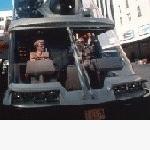 Rating: N/A |
those trans are supposed to use 50 weight non detergent oil. as they have a small lubrication pump, I don't know if thicker oil might damage that little pump. Normally, when you go from neutral to first gear, it may take anywhere from 10 to 30 seconds for the gears to stop turning to be able to smoothly engage. Larry's right, those fingers are set up when the pressure plate is rebuilt. adjusting them on the coach may cause chattering upon engagement. You could disconnect drive shaft and place trans in fourth, push clutch in and do adjustments till you could turn the trans yoke. To check for lost motion in the linkage, you could have him slowly push in the pedal while you watch at the back and see how much pedal moves before you see movement back there. | ||
| Rob Norgren (Robsedona)
Registered Member Username: Robsedona Post Number: 145 Registered: 11-2007 Posted From: 75.209.58.204  Rating: N/A |
I have never heard to but 90 wt in a 4speed Spicer the Manufacturer call for 50WT transmission oil to be used I have also heard from many sources they use 40wt same as the 8V71 oil. I also but Lucas in to help the oil stay on the gears better! Rob | ||
| Tim Brandt (Timb)
Registered Member Username: Timb Post Number: 428 Registered: 10-2003 Posted From: 74.244.14.221 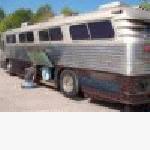 Rating: N/A |
40 wt here in my 5 speed spicer 6000 series | ||
| john w. roan (Chessie4905)
Registered Member Username: Chessie4905 Post Number: 1668 Registered: 10-2003 Posted From: 71.58.71.157  Rating: N/A |
One thing I did think of if you can't get this corrected, although is is probably rare, is to check runout on face of flywheel. If it varies because of flywheel to crankshaft distortion, it could cause this. I can't remember whether or not you can use a feeler gauge between disc and flywheel, pressure plate while installed. | ||
| Ralph Peters (Ralph7)
Registered Member Username: Ralph7 Post Number: 64 Registered: 3-2004 Posted From: 206.251.5.175 Rating: N/A |
Is the flywheel flat or is it a dish? If dish, both surfaces need surfaced the same. Like stated before those fingers are factory adjusted and locked. Is it a splined cross shaft, and are you certain the arm to cross shaft is in the correct position, many times on big truck that arm is one slot off,and no way will it adjust correctly. It sounds like that what is wrong. Easy to get it off by a spline. OH good luck in keeping those finger bolts from moving. | ||
| FAST FRED (Fast_fred)
Registered Member Username: Fast_fred Post Number: 978 Registered: 10-2006 Posted From: 76.202.165.190 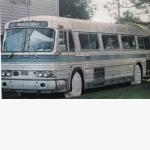 Rating: N/A |
MY book calls for engine oil (which was 30wt in 1964) . I use 40 WT as its here for the engine , but with a single quart of "synthetic" as it has better sheer strength. Who me grind a gear? The flywheel slowdown time sounds normal. From first , with the clutch depressed , shift to neutral, blip the throttle , and if you shift back to first with no noise all is WELL. FF | ||
| john w. roan (Chessie4905)
Registered Member Username: Chessie4905 Post Number: 1669 Registered: 10-2003 Posted From: 71.58.71.157  Rating: N/A |
arm uses a key way; no spline | ||
| Larry Nelson (Larryn4106)
Registered Member Username: Larryn4106 Post Number: 39 Registered: 8-2008 Posted From: 173.30.230.77 Rating: N/A |
FF, in your test, do you release the clutch in neutral? | ||
| Rob Norgren (Robsedona)
Registered Member Username: Robsedona Post Number: 146 Registered: 11-2007 Posted From: 75.211.123.155  Rating: N/A |
Larry Do not release the clutch in neutral. If you do release the clutch Spin it will and then back to grind! | ||
| FAST FRED (Fast_fred)
Registered Member Username: Fast_fred Post Number: 979 Registered: 10-2006 Posted From: 76.202.165.190  Rating: N/A |
The test is to see if the clutch is free and not dragging the tranny gears when its released. FF | ||
| John (John_t)
Registered Member Username: John_t Post Number: 2 Registered: 10-2009 Posted From: 66.244.97.31 Rating: N/A |
Our PLAN A on Monday or Tuesday (had to get away from it a while) is to get the 6 fingers back to original spec and fix a lil more slack in the linkage...IF THAT DONT FIX IT IM GIVING UP.. After a gentleman e mailed me the manual I about decided this IS NOT a seat of the pants shadetree thing and he goes to Florida in a few weeks and can get a "REAL" mechanic to fix it..In the meantime Im telling him to start it n let it run a while to warm up the tranny 40 wt oil,,,,,,,,push clutch in and shift to fourth,,,,,then to first AND LIVE WITH IT TILL HE GETS TO FLORIDA LOL This is getting beyond me and my 81 year old buddys shadetree methods I think, I will keep yall posted THANKS A BUNCH John Nordhoff in Indiana | ||
| FAST FRED (Fast_fred)
Registered Member Username: Fast_fred Post Number: 981 Registered: 10-2006 Posted From: 76.202.165.190  Rating: N/A |
Da Book gives a procedure where you start at the drivers clutch and measure and adjust everything till the clutch it self. Using this procedure we found the big lever that is pulled by the clutch linkage that actually rotates the rod that operated the clutch inside the bell housing , was installed wrong. The splines will allow most any position , the right spot gives a good long throw. If the clutch were replaced recently Its where I would look. On a Sportscar 4106 there are also lube fittings in the cross shaft as well as loads of other spots. FF | ||
| larry currier (Larryc)
Registered Member Username: Larryc Post Number: 286 Registered: 2-2007 Posted From: 64.12.116.203 Rating: N/A |
I think Fred is talking about is the thru shaft that holds the clutch fork. The end of the shaft sticks out of the bell and attaches with splines. If the piece that bolts to the splines is not set for the most action it would not allow alot of clutch disengagement. I was always told that 50 weight motor oil and 90 weight gear oil had the same flow characteristics when hot, but I can't back that up at the moment. | ||
| Dallas (Dal300)
Registered Member Username: Dal300 Post Number: 219 Registered: 3-2006 Posted From: 75.88.255.220 Rating: N/A |
I hope this comes through right, Here is a chart comparing oil and grease viscosity: http://www.etoz.com.my/data/viscosity.jpg | ||
| Nellie Wilson (Vivianellie)
Registered Member Username: Vivianellie Post Number: 333 Registered: 11-2008 Posted From: 75.178.92.43  Rating: N/A |
John - Maybe your buddy is expecting too much from this clunky technology we've all inherited? Like Larry says, "(We drive to) take advantage of what we are given, and it's not much." So maybe this is much ado about nothing? My coach, and everyone I've talked to, has trouble getting from neutral to first without grinding. [Which begs the question: Why so much easier getting into reverse?] As to certain of the techniques mentioned, the plaque on my bus warns: "Do not depress clutch when starting engine, before moving coach." [Begs another question: Why the heck not?] Even though we're not supposed to start with the clutch depressed, looks like everyone (from time to time) does it. I've even shut down and re-started this way, just to avoid holding up traffic (though it's a tricky operation if you're stopped on a slope and some idiot is crowding your rear bumper). Something else Larry says bothers me though: "After the clutch disengages, the further you depress the pressure plate springs, the sooner they or the arms will break." Larry, are you talking pedal pressure or something else? Sure don't want to be operating in a way that might cause damage. Anyway, John, I'm not sure your buddy's coach operates much differently than mine. How does it behave once you're rolling, changing from gear to gear? Will it slide smoothly into first during a rolling stop? If so, I tend to agree with your "live with it" advice (but I'm less sure about that "shift to fourth" part... I doubt my bus could even do that, not without a lot of expensive noise.) Ttry the various tests above and come back, okay? Maybe that wiil supply enough info for these guys to figure out your problem. (Having just spent several months with a cranky clutch, I surely do empathize with your frustration). Good luck! Nellie Wilson | ||
| john w. roan (Chessie4905)
Registered Member Username: Chessie4905 Post Number: 1671 Registered: 10-2003 Posted From: 71.58.71.157  Rating: N/A |
the shift from fourth, then first is when the bus is moving, just before the stop. When shifting from neutral to first when stopped with engine idling and clutch depressed will take anywhere from five seconds to 15 seconds without grinding if clutch pressure plate is completely releasing. Will take longer if tranny is warm and or idle speed is too high. Since this transmission has no synchronizers, this is a normal characteristic. If it never allows engaging first no matter how long you hold in the clutch pedal, then one or some of the clutch components are dragging, including the pilot bearing. | ||
| Jim Wilke (Jim Bob) (Pd41044039)
Registered Member Username: Pd41044039 Post Number: 398 Registered: 2-2001 Posted From: 69.77.144.102 Rating: N/A |
I have a 4104 which operates just about like what John R (above) describes. I start in neutral and by habit, I depress the clutch before turning the "key". Once it is runnig & air built up, I depress the clutch, wait about 5-7 seconds, then gently move the shifter 'till the teeth can be felt. This very light pressure slows the gears to where they will mesh. (I have 50wt Non detergent per the 4104 book.) Coming to a traffic light, I put it in neutral & coast 'till I am about a car's length from stopping and at about 2-3 mph, I pull it GENTLY into first and immediately push the clutch in & hold it. As you practice this, you find the rolling speed where it just drops in with no fuss. And yes, I hold it in gear with the clutch pushed in at the light. I have driven the bus about 70,000 miles in 10 years & I doubt that throwout bearing I replaced will fail in my time owning the bus. Now, when I got the bus, the flywheel DID have the runout or wobble that John R. described and the clutch chattered & dragged. That wobble or runout can be seen by removing the little square plate on the bell housing by the starter & starting the engine & letting it idle. If the ring gear "moves" from right to left visibly, there's a problem. Another thing that will cause very hard shifting is if the engine is idling too fast. (or if the throttle takes too long to return while shifting through 2nd, 3rd & 4th.. If it idles too fast, (I have seen some idles set at almost 900rpms), it will take way longer for the rotating mass to slow down. | ||
| larry currier (Larryc)
Registered Member Username: Larryc Post Number: 287 Registered: 2-2007 Posted From: 64.12.116.203 Rating: N/A |
Hi Nellie, Just guessing here like usual... I think you can get into R easier than 1st because R is using 2nd gear and size matters... The question about the pressure plate parts relates to John's saying that his friend was readjusting the builders settings to try and get more gap between the pressure plate and flywheel for the clutch to spin freely in. My point was, lets not go to far, the builder has certain specs they use and those specs should allow the clutch to work properly without increasing the internal clutch movements. Jim brings up a good point about flywheel runout. I would caution about looking at the starter ring on the flywheel though. We cut them off with a torch when the teeth get worn and use the same torch to heat the ring enough to slip a new one onto the flywheel. They don't always go on 100% perfect, so try to look at the flywheel edge instead of the starter ring edge for this inspection. Thanks to Dallas for the viscosity chart. Don't know if I read it correctly, but I think it shows that 90 weight gear oil and 50 weight motor oil are similar in viscosity... | ||
| john w. roan (Chessie4905)
Registered Member Username: Chessie4905 Post Number: 1672 Registered: 10-2003 Posted From: 71.58.71.157  Rating: N/A |
the 1948 ACF Brill I had previous to the 4104, acted exactly the same way. Basically the same Spicer trans, just not angle drive. | ||
| Mel La Plante (Mel_4104)
Registered Member Username: Mel_4104 Post Number: 144 Registered: 7-2006 Posted From: 99.199.173.195 Rating: N/A |
you statated that you replaced the clutch plate.where did you get it refaced and what type of material did they reface it with? did you tell that it was out of a bus NOT a heavy duty truck , if not hten 99 chances out of 100 they refaced it with they very aggressive faceing that the truckers love as it grabs real good and real quick. not what you want for your bus and tranny. get ahold of the company that refaced it and find out what they used. the bus companies up use a special linning on the clutches and it has cut all this grinding and are very easy to set up. as stated besure that you do not have a lot of wear in the linkage as the tower can really wear the bushings out if the OP did not grease the tower using the fitting hanging down between the 2 bulk heads. take the return spring of the arm controling the throw out arm, now hold the clutch pedal up as high as it will go now have someone go to the back and try pushing the shift rod back and for and see how much travel that rod has this will give you an idea as to the shape the tower and other linkage parts are in. there should be very little travel. | ||
| Gus Causbie (Gusc)
Registered Member Username: Gusc Post Number: 1003 Registered: 11-2005 Posted From: 208.54.200.122 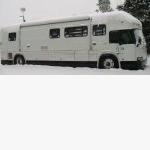 Rating: N/A |
I operate my 4104 exactly as Jim Wilke does, this is the only way I can avoid clashing gears!! I can shift it into first from neutral only at the first start of the day but never after that. This shoots down the theory of using heavier oil. The pump cannot handle 90W gear oil when it is cold without something eventually breaking. The manual clearly states to use 50W aircraft grade oil which meant mineral oil in 1953 when the 4104 was born. I really appreciate your post John t because I had thought of doing all the stuff you did and now I won't have to do it. I completely overhauled my clutch and shift linkage with new parts and it didn't help shifting any!! It sure did help the clutch operation though. As far as I can find out these buses never had clutch brakes, wish they did! | ||
| Nellie Wilson (Vivianellie)
Registered Member Username: Vivianellie Post Number: 334 Registered: 11-2008 Posted From: 75.178.92.43  Rating: N/A |
Hi Larry - Thanks for the clarification. Even when I can't post, I tune in for tips & tricks - not just about mechanical stuff, but for anything might help me become a better operator. So I'm glad to hear you weren't talking about 'pedal' pressure (since I'm small, I have to really stand on the thing). So, you can replace a starter ring without dismantling the clutch? Not that mine's bad (knock on wood) but for future reference. Thanks again! Nellie | ||
| FAST FRED (Fast_fred)
Registered Member Username: Fast_fred Post Number: 982 Registered: 10-2006 Posted From: 75.60.109.64  Rating: N/A |
So I'm glad to hear you weren't talking about 'pedal' pressure (since I'm small, I have to really stand on the thing). Review the board for a "mousetrap" , as used on the later Sportscars. My bride is 5 ft 100 lbs , she has no problem stepping on the clutch , mailboxes by the roadside are a different problem tho. FF | ||
| Jim Wilke (Jim Bob) (Pd41044039)
Registered Member Username: Pd41044039 Post Number: 400 Registered: 2-2001 Posted From: 69.77.144.102 Rating: N/A |
Nellie, You can not replace the flywheel "ring gear" without removing the transmission & clutch. Normally the flywheel is removed & the old gear removed, then with the flywheel lying flat, the new gear is heated to where it will fit over the outside of the flywheel. Some flywheels have a ridge that stops & locates the gear. Some don't and you'd set up some blocks to stop & locate the gear so it goes on the same distance as the old one. The operation of putting the gear on needs to be done accurately & quickly because when it touches the flywheel, it cools & shrinks. If it doesn't go on right, it takes a hot torch to heat it up quickly enough to expand it so it moves to where it needs to be. | ||
| David Hancock (Daveh)
Registered Member Username: Daveh Post Number: 4 Registered: 1-2005 Posted From: 67.142.130.11 Rating: N/A |
Fred-Do you happen to have a source for a mousetrap? I sure could use one or an air set-up I just haven't been able to find a source for either Thanks Dave H | ||
| David Hancock (Daveh)
Registered Member Username: Daveh Post Number: 5 Registered: 1-2005 Posted From: 67.142.130.46 Rating: N/A |
I guess I should have mentioned I need this for my 1960 4104. I don't expect that they make one for this, but one that could be made to work would be great! Thanks Dave H | ||
| john w. roan (Chessie4905)
Registered Member Username: Chessie4905 Post Number: 1677 Registered: 10-2003 Posted From: 71.58.71.157  Rating: N/A |
HB industries has the unit like the one on mine, although mine is not from them. Theirs are very expensive. My Brill had an air operated clutch with a rotochamber attached to the release lever. Used an air treadle up front. Worked nice with light pedal pressure. You had to be careful with engagement, as it could be harsh. If I still had it, I'd have added a shock absorber parallel to rotochamber to deal with this issue. | ||
| Jim Wilke (Jim Bob) (Pd41044039)
Registered Member Username: Pd41044039 Post Number: 401 Registered: 2-2001 Posted From: 69.77.144.102 Rating: N/A |
Mine has a non factory air assisted clutch. It uses a Bendix clutch assist application valve installed in the rear transverse clutch rod. That sends air to a cylinder that pushes on the clutch arm. The stationary end attaches to a bracket bolted on where the parking drum brake (on the output shaft of the trans) used to mount. This works really well giving me perfect smooth clutch control and a pedal pressure like an F-150 or similar light truck. (About 20 lbs measured with a scale.) I installed a brake light switch in an unused port on the cylinder to trip my cruise control when I push in the clutch. | ||
| Jim Wilke (Jim Bob) (Pd41044039)
Registered Member Username: Pd41044039 Post Number: 402 Registered: 2-2001 Posted From: 69.77.144.102 Rating: N/A |
For the clutch valve, go to http://www.bendix.com/en-us/service/library/Pages/Catalog.aspx . Scroll down to "Valves & Related Devices". The nineth listing is "03-A-19B CLUTCH VALVE PULL TYPE" which you can download & keep for when the Bendix guys can't figure out what you want. I can measure my air cylinder diameter & stroke. It's important to have a stroke longer than the clutch travel from new to worn out so you don't have to periodically adjust the cylinder mounting. The P.O. had installed one with a too short travel which ultimately let the clutch slip. | ||
| RJ Long (Rjlong)
Registered Member Username: Rjlong Post Number: 1617 Registered: 12-2000 Posted From: 67.182.53.218 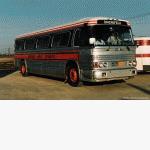 Rating: N/A |
David H - GMC did not manufacture a "mousetrap" for the 4104. They became available on the 8V-powered 4106 and later models. There are only two spring-type mousetraps that I'm aware of on 4104s, and both were custom-made. David Sweet here in CA has one on his that Ed Carroll built, using one off a 4106 as a guide. One of the challenges Ed had was the fact that the transmissions are mounted differently in the 04 and 06. The 06 trap bolts to the top of the transmission, Ed's trap for David's 04 bolts to the firewall. Not ideal, but it works. But before you spend a whole bunch of money on this little project, have you taken the time to adjust the clutch per DA BOOK?? I mean, starting up front and working your way to the rear, just like the factory says you're supposed to? Quite a few busnuts have discovered that it often makes a HUGE improvement in the clutch action. After DA BOOK, the air slave cylinder Jim talks about is a good option, and less headache than trying to fabricate a mechanical one. FWIW & HTH. . .  | ||
| john w. roan (Chessie4905)
Registered Member Username: Chessie4905 Post Number: 1681 Registered: 10-2003 Posted From: 71.58.71.157  Rating: N/A |
The company that makes the air assist clutch sensing valve no longer manufacturers it and has no parts from an e-mail I sent to company about 6 months ago. Don't know if HB industries has a new source or they have a limited number of units left. If so, maybe someone could take one apart to see how hard it would be to copy. | ||
| Gus Causbie (Gusc)
Registered Member Username: Gusc Post Number: 1006 Registered: 11-2005 Posted From: 208.54.200.116  Rating: N/A |
Jim, It appears that 03-A-19B is just the actuating valve and that there is also an air cylinder which actually pushes the clutch?? Will you please send me a photo of your air assist installation to my email address? egusDOTcATcenturytelDOTnet Thanks (Message edited by gusc on October 07, 2009) | ||
| Jim Wilke (Jim Bob) (Pd41044039)
Registered Member Username: Pd41044039 Post Number: 404 Registered: 2-2001 Posted From: 69.77.144.102 Rating: N/A |
Gus, you are correct. I will go take pictures. It is a nice sunny day for a change. | ||
| David Hancock (Daveh)
Registered Member Username: Daveh Post Number: 6 Registered: 1-2005 Posted From: 67.142.130.32 Rating: N/A |
Jim, Can you send them to me also at hancockdaveh@aol.com Thanks Dave H | ||
| Rob Norgren (Robsedona)
Registered Member Username: Robsedona Post Number: 154 Registered: 11-2007 Posted From: 70.210.209.212  Rating: N/A |
Can you post them here for people into the tomorrows to come for a picture is worth a thousand words :-) | ||
| Jim Wilke (Jim Bob) (Pd41044039)
Registered Member Username: Pd41044039 Post Number: 407 Registered: 2-2001 Posted From: 69.77.144.102 Rating: N/A |
Rob, I don't think I can post them here because of the picture size. And I don't do facebook & all that. I can & will be happy to forward them to you and for anyone else, the air cylinder is 2 1/2" bore x 6" stroke. You could use a 3" or so & it would still clear the shift arms without "gymnastics". | ||
| Gus Causbie (Gusc)
Registered Member Username: Gusc Post Number: 1007 Registered: 11-2005 Posted From: 208.54.200.36  Rating: N/A |
Jim, Got the pics, thanks. |